Search Images
Browse Content (p. 1416)
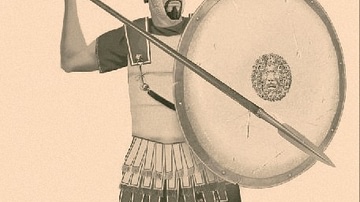
Image
Carthaginian Sacred Band Hoplite
A Carthaginian hoplite from the Sacred Band, the army corps composed of Carthaginian citizens. Taken from a coin of Syracuse, 4th century BCE.

Image
Punic Cuirass
A Punic gilded bronze cuirass from Ksour Essaf, 3rd-2nd century BCE. (Bardo National Museum, Tunisia)

Image
Roman House, Utica
The remains of a Roman house at Utica (Tunisia), once capital of the Roman province of Africa.
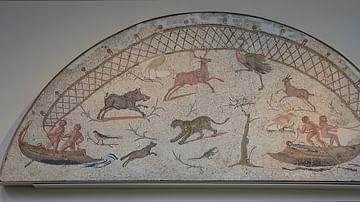
Image
Roman Hunt Mosaic
A floor mosaic from Roman Utica (modern Tunisia) depicting a hunt in marshlands, 200-225 CE. (British Museum, London)
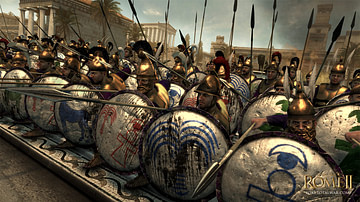
Image
Carthaginian Mercenaries
An artist's impression of how a troop of Carthaginian mercenaries may have appeared in battle formation.

Image
Agathocles of Syracuse
A gold coin from Syracuse depicting the tyrant Agathocles, 310-300 BCE. (Palazzo Blu, Pisa)
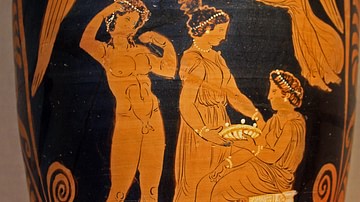
Image
Fury, Phaedra & Hippolytos
A red-figure vase depicting one of the Furies hovering over Hippolytos, an attendant, and Phaedra. 330-310 BCE. (Metropolitan Museum of Art, New York)

Image
Orestes Pursued by a Fury
A red-figure vase depicting Orestes being pursued by one of the Furies at Delphi after he murdered his mother Clytemnestra. From Paestum, 330 BCE. (British Museum, London)
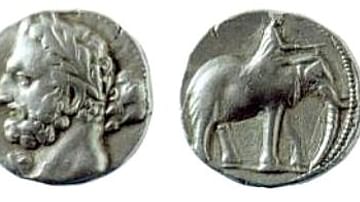
Image
Hamilcar Barca
Carthaginian silver dishekel. The head has been identified as Hamilcar Barca (c. 285 – c. 228 BCE). Minted in Carthago Nova, Spain, 237-227 BCE.
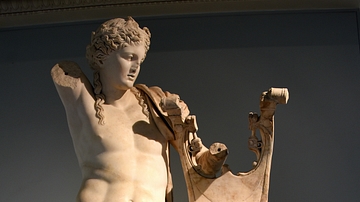
Image
Apollo Holding a Kithara
In this elaborately carved figure, the iconographical features of both Apollo and Dionysos, the wine god, have been fused.; the slipping himation and the sensual treatment of the flesh are typical of Dionysos, while the kithara and quiver...